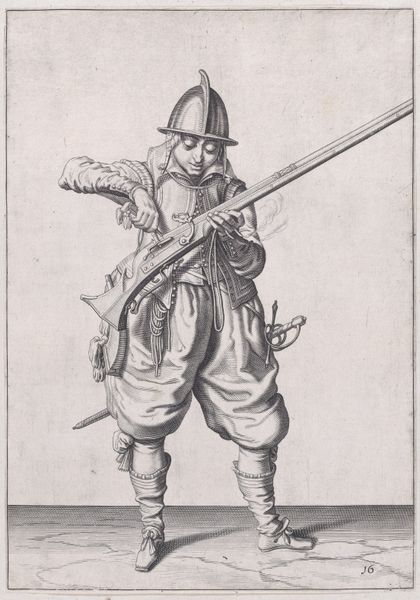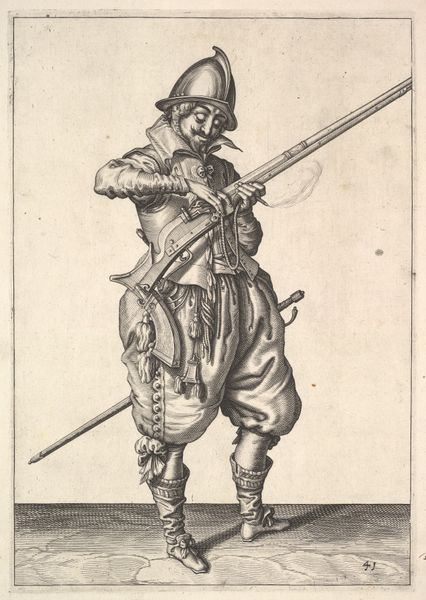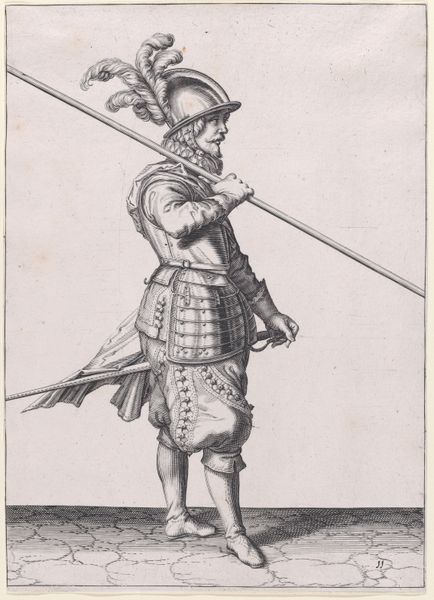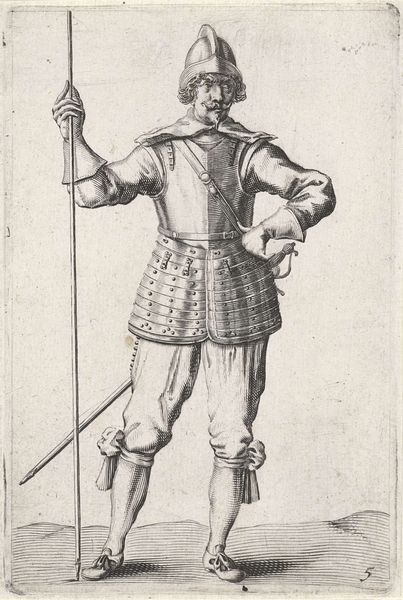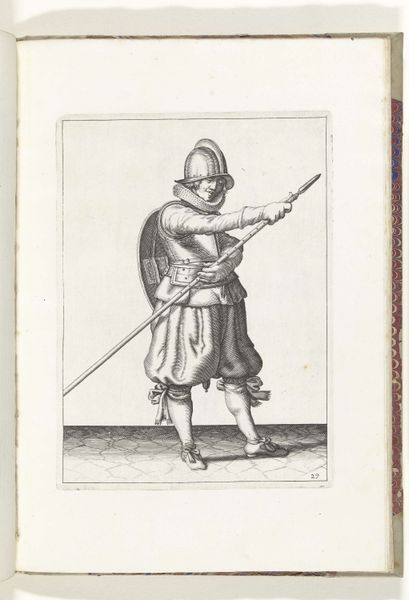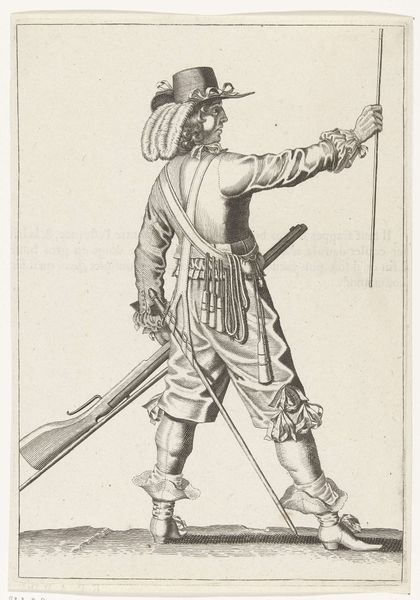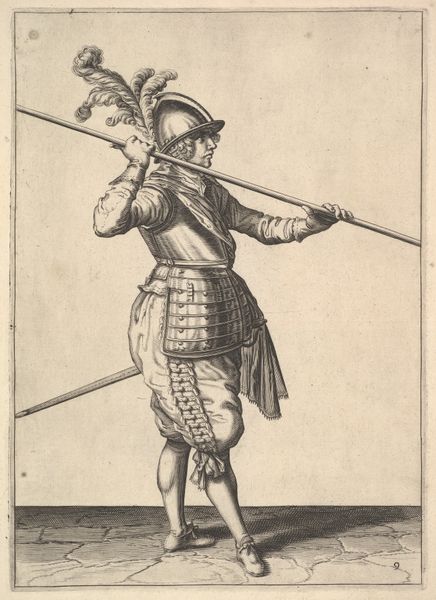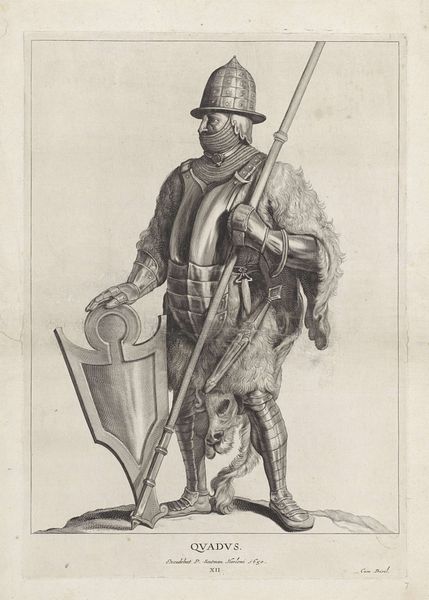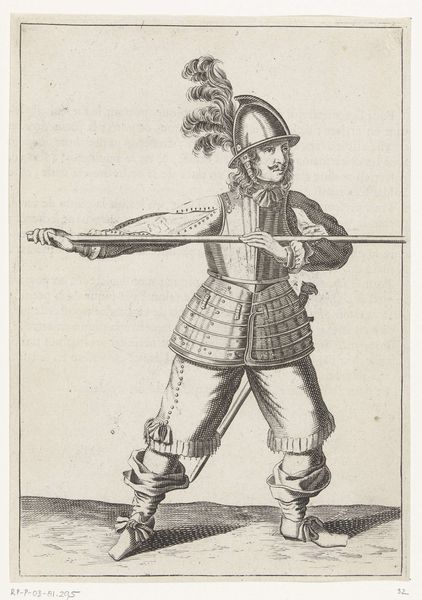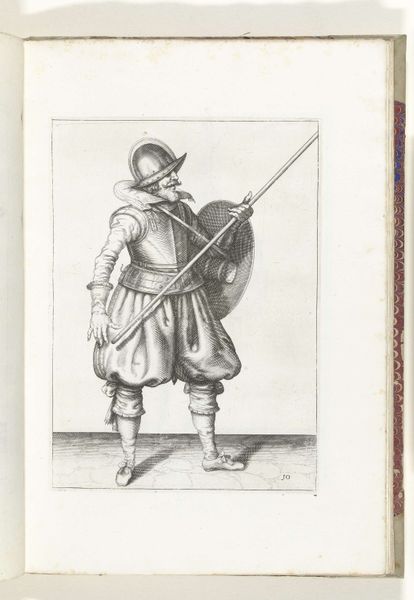
A soldier ramming home powder and bullet with the ramrod, from the Marksmen series, plate 26, in Waffenhandlung von den Rören Musquetten undt Spiessen / Wapenhandelinghe van Roers Musquetten ende Spiessen (The Exercise of Arms) 1608
0:00
0:00
drawing, print, engraving
#
portrait
#
drawing
# print
#
mannerism
#
soldier
#
men
#
portrait drawing
#
history-painting
#
engraving
Dimensions: Sheet: 10 1/16 × 7 3/16 in. (25.5 × 18.3 cm)
Copyright: Public Domain
Editor: So, this is "A soldier ramming home powder and bullet…" from the Marksmen series by Jacques de Gheyn II, made in 1608. It's an engraving. I'm immediately struck by how stiff and posed he looks, almost like a mannequin. What story does this print tell you? Curator: It speaks volumes about the evolving role of military imagery in early modern Europe. De Gheyn’s "Wapenhandelinghe" wasn’t just an artistic endeavor; it was a manual, commissioned to standardize and modernize military drills. Notice how each step, like ramming the powder, is meticulously depicted. This reflects a shift towards professional, disciplined armies, rather than relying solely on untrained conscripts. Editor: So, it’s not about glorifying war but about... military reform? Curator: Exactly. Consider the context: the Eighty Years' War between the Dutch Republic and Spain was ongoing. Efficient armies were crucial. The prints served as visual aids for soldiers, yes, but they also showcase the military prowess of the Dutch Republic, subtly promoting a specific socio-political agenda through readily reproducible images. Who would have benefited from seeing these images disseminated widely? Editor: Maybe the ruling class or wealthy merchants, to reassure them that their investments were protected? Curator: Precisely! It reinforced confidence in the state's ability to defend itself, shaping public opinion and national identity through visual culture. This isn't simply art; it’s a powerful tool in the construction of a national narrative. Editor: I see it differently now! I was so focused on the figure himself, but now I see the print’s broader impact. Curator: And hopefully understand that these images also speak to how deeply entangled art is with power, politics and evolving institutional practices.
Comments
No comments
Be the first to comment and join the conversation on the ultimate creative platform.


